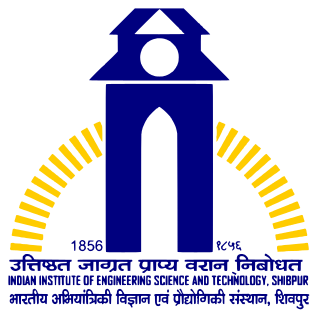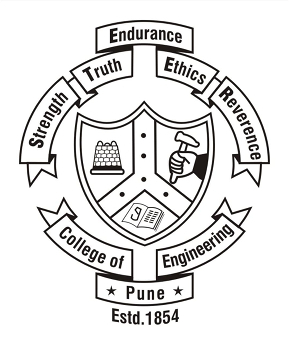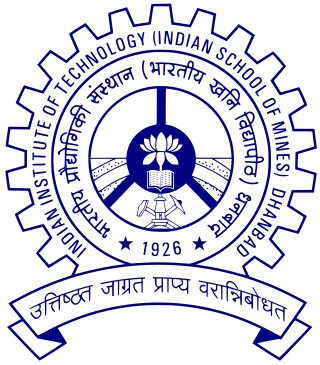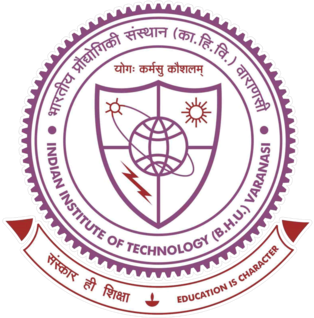
Indian Institute of Technology Roorkee is a technical university located in Roorkee, Uttarakhand, India. It is the oldest engineering institution in India. It was founded as the College of Civil Engineering in 1847 during East India Company rule in India by James Thomason, the Lieutenant-Governor of the North-Western Provinces in which Roorkee was located; its purpose was to train officers and surveyors employed in the construction of the Ganges Canal. In 1854, after the completion of the canal and Thomason's death, it was renamed the Thomason College of Civil Engineering by Proby Cautley, the designer and projector of the canal. It was renamed University of Roorkee in 1949, and again renamed IIT Roorkee in 2001. The institution has 22 academic departments covering Engineering, Applied Sciences, Humanities & Social Sciences and Management programs with an emphasis on scientific and technological education and research.

The University of Calcutta is a public state university located in Kolkata, West Bengal, India. It has 151 affiliated undergraduate colleges and 16 institutes in Kolkata and nearby areas. It was established on 24 January 1857 and is the oldest multidisciplinary university of Indian Subcontinent and Southeast Asian Region. Today, the university's jurisdiction is limited to a few districts of West Bengal, but at the time of its establishment it had a catchment area ranging from Kabul to Myanmar. It is accredited as an "A" grade university by the National Assessment and Accreditation Council (NAAC).

Indian Institute of Engineering Science and Technology, Shibpur is a public technological university located at Shibpur, Howrah, West Bengal, India. Founded in 1856, it is recognised as an Institute of National Importance under Ministry of Education by the Government of India. It is controlled by the Council of NITSER. It is the fourth oldest engineering institute in India

College Of Engineering Pune (COEP) Technological University is a unitary public university of the Government of Maharashtra, situated in Pune, Maharashtra, India. Established in 1854, it is the 3rd oldest engineering institute in India, after College of Engineering, Guindy (1794) and IIT Roorkee (1847). The students and alumni are colloquially referred to as COEPians. On 23 June 2022, Government of Maharashtra issued a notification regarding conversion of the college into an independent technological university. On 24 March 2022, both the houses of the state government passed the CoEP Technological University bill, which has conferred a unitary state university status on the institute.

Indian Institute of Technology Dhanbad is a public technical university located in Dhanbad, India. IIT Dhanbad is an Institute of National Importance, and is ranked among the premier engineering institutions of India.

Indian Institute of Technology Varanasi(IIT-BHU) is a public technical university located in Varanasi, Uttar Pradesh, India. Founded in 1919 as the Banaras Engineering College, it became the Institute of Technology, Banaras Hindu University in 1968. It was later designated an Indian Institute of Technology in 2012. IIT (BHU) Varanasi has 16 departments, 3 inter-disciplinary schools and a Humanities & Social Sciences Section. It is located inside the Banaras Hindu University Campus.
The systems of secondary and post-secondary education in Kolkata are listed as follows:
Education in West Bengal is provided by both the public sector as well as the private sector. Health Sciences, University of North Bengal and University of Calcutta.
The Indian Institutes of Technology (IITs) are the premier autonomous public technical and research universities located across India, founded under the leadership of Jawaharlal Nehru.
Education in the Indian subcontinent began with the teaching of traditional elements including Indian religions, Indian mathematics, and Indian logic. Education took place at early Hindu and Buddhist centers of learning such as ancient Takshashila, Nalanda, Mithila, Vikramshila, Telhara and Shaunaka Mahashala in the Naimisharanya forest. Islamic education was ingrained during the establishment of Islamic empires in the Indian subcontinent in the Middle Ages. Europeans later brought western education to colonial India.

Tathagata Roy is an Indian politician who served as the Governor of Tripura from 2015 to 2018 and the Governor of Meghalaya from August 2018 to the end of his term in August 2020. He was the 6th state president of West Bengal state unit of Bharatiya Janata Party from 2002 to 2006 and a member of the BJP National Executive from 2002 until 2015.
In India, Institute of National Importance (INI) is a status that may be conferred on a premier public higher education institution by an act of the Parliament of India for such institutions which, "serve as a pivotal player in developing highly skilled personnel within the specified region of the country or state." Institutes of National Importance receive special recognition, higher autonomy, and direct funding from the Government of India. Some of India's highest ranked universities, including all of the IITs, NITs, AIIMSs, IISERs and IIMs, have this status.
The Indian Institutes of Technology (IITs) are a network of engineering and technology institutions in India. Established in 1950, they are under the purview of the Ministry of Education of the Indian Government and are governed by the Institutes of Technology Act, 1961. The Act refers to them as Institutes of National Importance and lays down their powers, duties, and framework for governance as the country's premier institutions in the field of technology. 23 IITs currently fall under the tenor of this act. Each IIT operates autonomously and is linked to others through a common council called the IIT Council, which oversees their administration. The Minister of Education of India is the ex officio chairperson of the IIT Council.

India has the largest numbers of engineers as well as the largest number of engineering education institutes and infrastructure in the world. As of 2021, India annually produces 1.5 million engineering graduates. India's technical education infrastructure includes 2500 engineering colleges, 1400 polytechnics and 200 schools of planning and architecture.
Maneklal Sankalchand Thacker (1904–1979) was an Indian power engineer, academic and the director general of the Council of Scientific and Industrial Research, the largest research and development organization in India. He served as a secretary at the Ministry of Scientific Research and Cultural Affairs (1957–62) and sat in the Planning Commission of India as a member from 1962 to 1967. He was an elected fellow of the Indian Academy of Sciences and the Indian National Science Academy. The Government of India awarded him the third highest civilian honour of the Padma Bhushan, in 1955, for his contributions to literature and science education.
Shyam Sundar Rai is an Indian seismologist and a former chair professor at the department of Earth and Climate Science of the Indian Institute of Science Education and Research, Pune. He is known for his researches on the seismic structure of Indian continental lithosphere and is an elected fellow of all the three major Indian science academies viz. Indian National Science Academy, Indian Academy of Sciences, and the National Academy of Sciences, India as well as of the Indian Geophysical Union. The Council of Scientific and Industrial Research, the apex agency of the Government of India for scientific research, awarded him the Shanti Swarup Bhatnagar Prize for Science and Technology, one of the highest Indian science awards for his contributions to Earth, Atmosphere, Ocean and Planetary Sciences in 1996.
Amitabha Bhattacharyya was an Indian production engineer and the director of the Indian Institute of Technology, Kanpur. He was credited with the establishment of the department of production engineering at Jadavpur University. The Council of Scientific and Industrial Research, the apex agency of the Government of India for scientific research, awarded him the Shanti Swarup Bhatnagar Prize for Science and Technology, one of the highest Indian science awards for his contributions to Engineering Sciences in 1971.
Howrah is a city in West Bengal, India. The education system of Howrah are followed below.

The University College of Science, Technology and Agriculture are two of five main campuses of the University of Calcutta (CU). The college served as the cradle of Indian sciences by winning the Nobel Prize in Physics in 1930 and many fellowships of the Royal Society London.
Amitabha Ghosh is an Indian researcher, administrator and educator. He currently holds the position of Honorary Scientist, Indian National Science Academy and Honorary Distinguished Professor in the Aerospace Engineering and Applied Mechanics Department at the Indian Institute of Engineering Science and Technology, Shibpur, Howrah, West Bengal. He is an Emeritus Senior Fellow of the Alexander von Humboldt Foundation and a Fellow of The National Academy of Sciences, India, of which he was elected a Senior Scientist Platinum Jubilee Fellow in 2012. Ghosh has made contributions in various fields, including fundamental and applied research, technology development, administration and social development.








